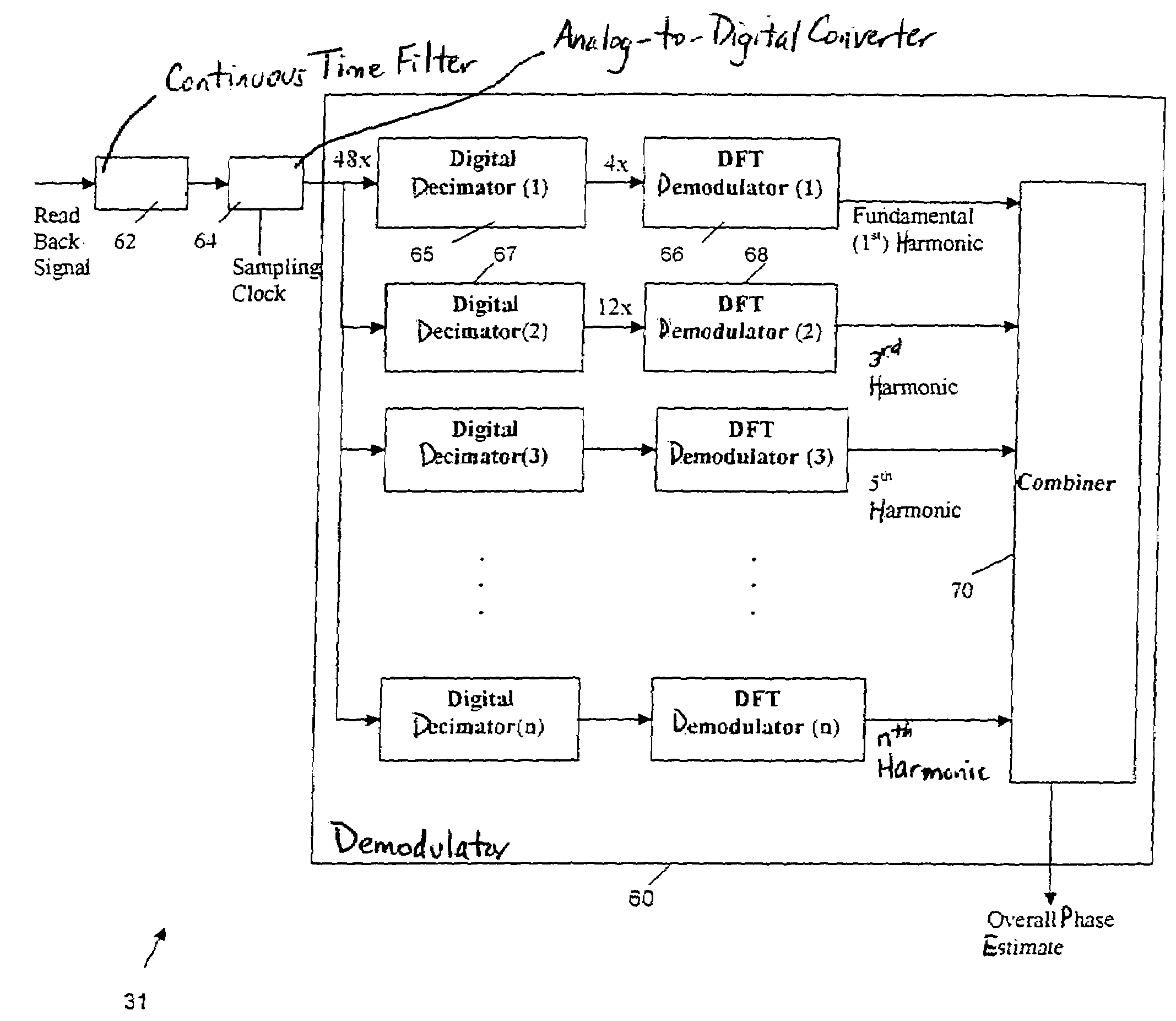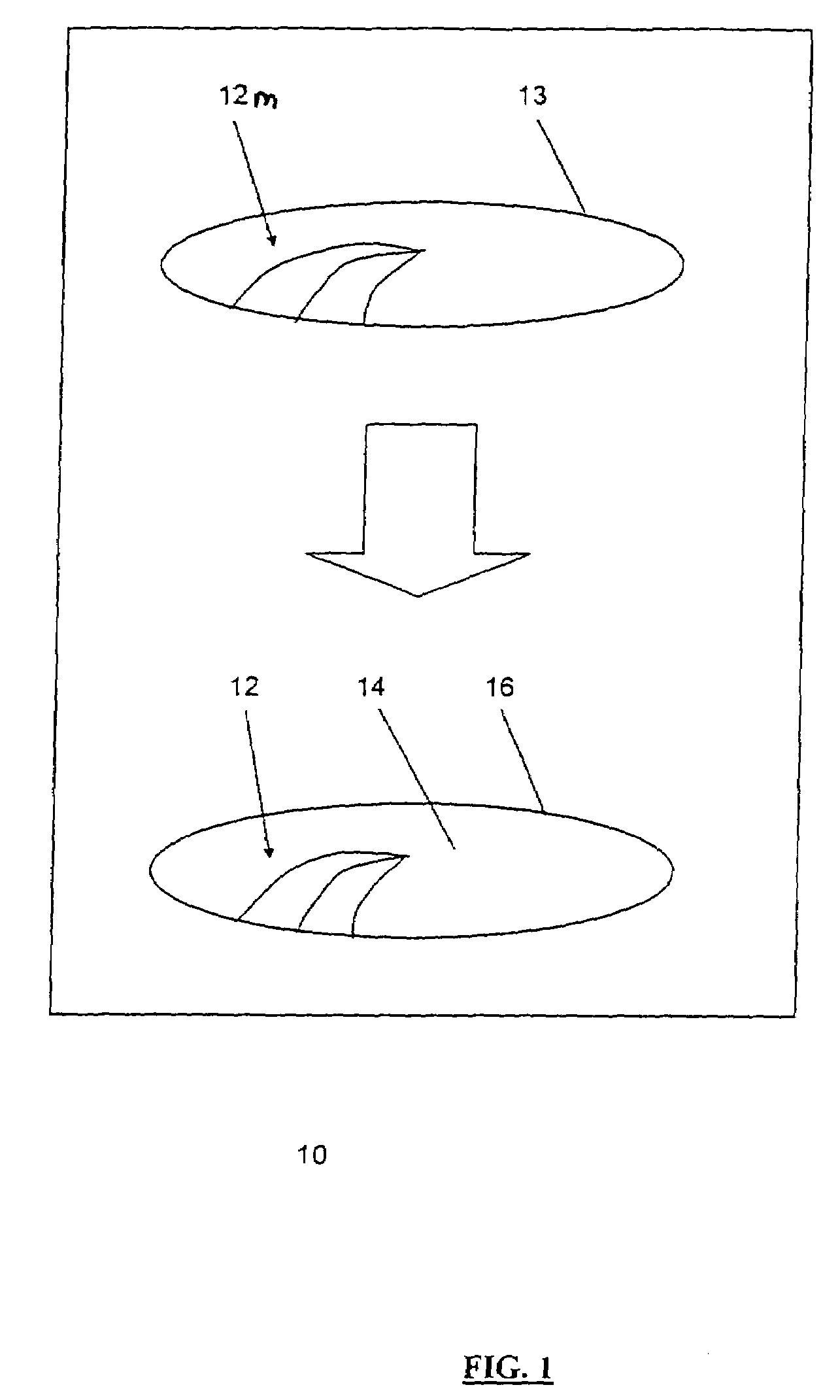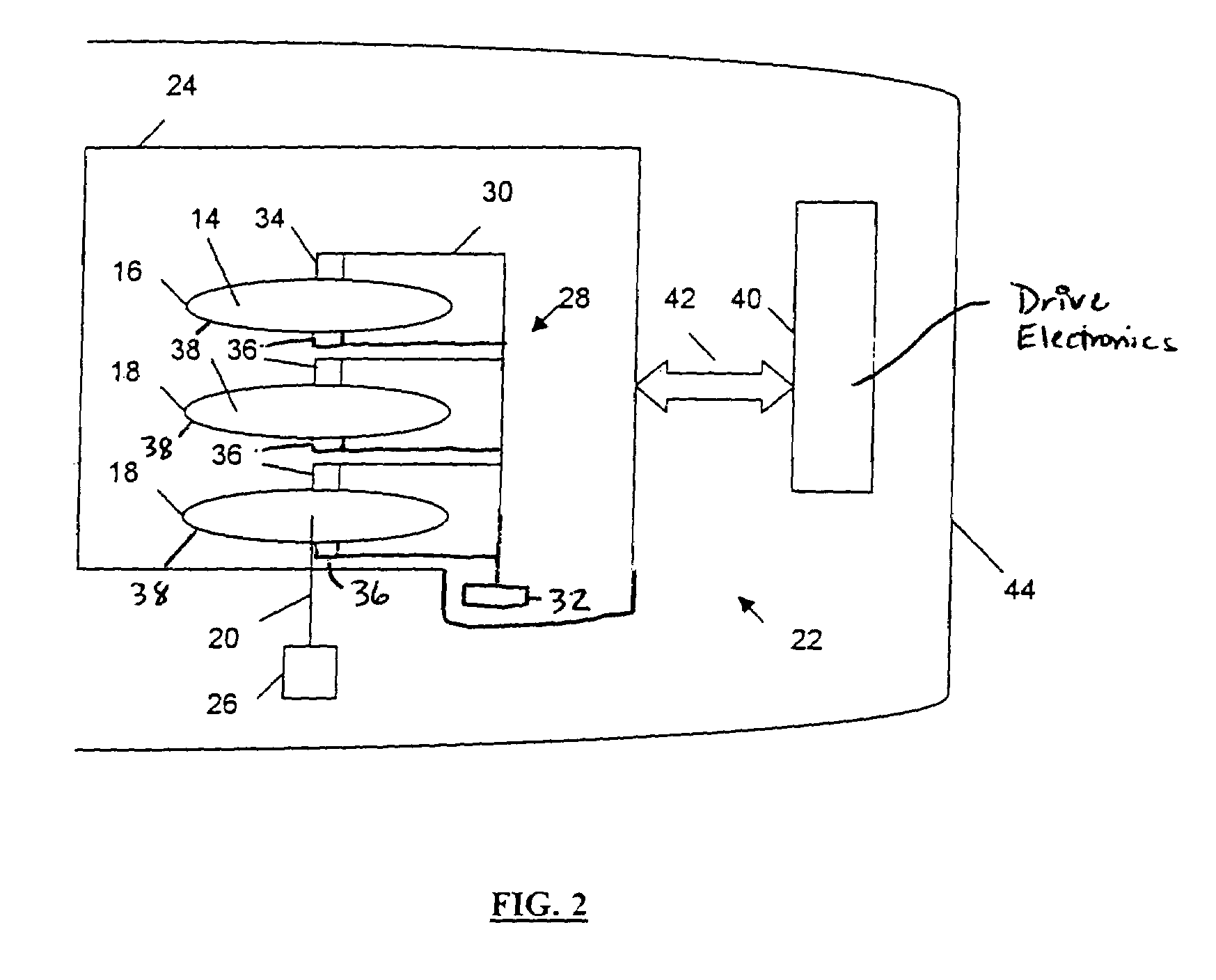Disk drive self-servo writing using fundamental and higher harmonics of a printed reference pattern
a self-servo writing and reference pattern technology, applied in the direction of maintaining head carrier alignment, recording signal processing, instruments, etc., can solve the problems of rework or scrapping, complex and expensive servo writer, and high time-consuming servo-writing by the servo writer, so as to prolong the usable lifetime of printed media, improve the snr, and high track density
- Summary
- Abstract
- Description
- Claims
- Application Information
AI Technical Summary
Benefits of technology
Problems solved by technology
Method used
Image
Examples
Embodiment Construction
[0039]In one embodiment, the present invention provides self-servo writing servo patterns in a disk drive using a printed reference pattern. The printed reference pattern is printed on a reference disk by magnetic printing, and in one example includes magnetic segments having magnetic transitions wherein the direction of magnetization is generally along the circumferential direction of circular concentric disk tracks. Spatial separation between proximately printed segments is used to obtain phase information that provides timing and position information for positioning the heads over the tracks for self-servo writing of servo patterns without a servo writer.
[0040]Referring to FIG. 1, a magnetic printing station 10 magnetically prints a mask reference pattern 12m from a mask 13 onto a disk surface 14 of a magnetic reference disk 16, as indicated by the block arrow, thereby forming a printed reference pattern 12 on the disk surface 14 of the reference disk 16. In this manner, the magn...
PUM
| Property | Measurement | Unit |
|---|---|---|
| diameter | aaaaa | aaaaa |
| dimension | aaaaa | aaaaa |
| phase | aaaaa | aaaaa |
Abstract
Description
Claims
Application Information
 Login to View More
Login to View More - R&D
- Intellectual Property
- Life Sciences
- Materials
- Tech Scout
- Unparalleled Data Quality
- Higher Quality Content
- 60% Fewer Hallucinations
Browse by: Latest US Patents, China's latest patents, Technical Efficacy Thesaurus, Application Domain, Technology Topic, Popular Technical Reports.
© 2025 PatSnap. All rights reserved.Legal|Privacy policy|Modern Slavery Act Transparency Statement|Sitemap|About US| Contact US: help@patsnap.com



